Sights and Activities
Below are the places we saw and activities completed while visiting Ireland:
Belfast
St. George’s Market: the last surviving Victorian covered market in the city, built between 1890 and 1896. The market is full of different vendors from food to arts and where we had a Belfast Bap!!
City Hall: a Renaissance-style City Hall completed in 1906.
Crown Liquor Saloon: the city’s most famous pub built by Patrick Flanagan in 1885 and displays Victorian architecture at its most extravagant.
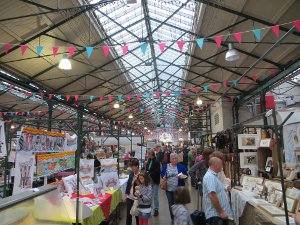

Clock Tower: situated in Queen’s Square and completed in 1869.
Titanic Quarter: we walked along the Titanic trail, passing by yellow cranes and where the birthplace, in 1911, of the Titanic took place, the ‘unsinkable’ ocean liner that struck an iceberg and sank in 1912. The complex, including the Titanic Belfast Building, is now a tourist attraction that features a museum that exhibits the construction and story of the famous ship. We did not enter the museum, but admired the building from a distance.
Botanic Gardens: a public park in the city, it occupying 28 acres, and where Ulster Museum is located.

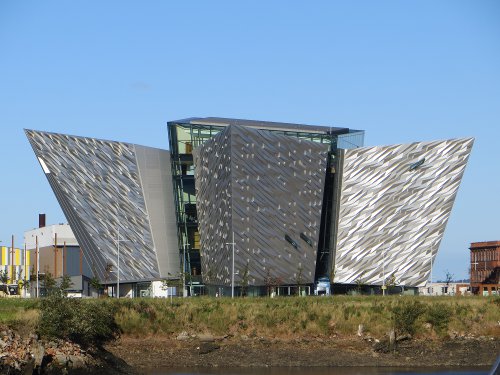
Ulster Museum: the renovated museum opened in 2009, which features several exhibits. We roamed through the History Zone to learn about the city’s past, including the time known as the Troubles, where terror raged through the streets of Belfast due to social inequality.

Coiste Political Walking Tour: we toured the streets of West Belfast with a former prisoner of war fighting with the Irish Republic Army. His strong Irish accent was at times difficult to understand, but we learned about the conflict that went on in the 70’s until the 90’s, the Troubles. He took us along Falls Road which is predominately Catholic with many Irish and Palestinian flags hanging from window sills. The walls along the road are covered with political murals related to the Troubles and other political current events. We also saw the Peace Line, a 4 km long barrier that divides the Catholic and Protestant districts. The tour ended in true Irish tradition, in a local pub with a half pint of Guinness. To read more about the history of Ireland, including the Troubles, and our thoughts, please be sure to read our article.
Shankill Road: after our tour on Falls Road, the Catholic side, we were curious to see the “other side.” This road is predominately Protestant and full of British flags. The walls on this road also contained murals, far less than Falls Road and only as memorials of the fallen Protestant soldiers during the Troubles.
Causeway Coast
We toured the beautiful Causeway Coast by public transportation. We first took a bus from Larne to Portrush with beautiful scenery of beaches. We then took a train along the rest of the Causeway Coast to Derry, which is considered “one of the most scenic train rides in the world.”
Giant’s Causeway: this Unesco World Heritage site consists of spectacular rock formations and one of the islands most impressive and atmospheric landscape features. Ancient people believed it was the work of giants, but these closely packed, hexagonal stone columns are purely Mother Nature’s work. The scientific explanation for the formation is that the columns are contraction cracks caused by a cooling lava flow some 60 million years ago. It was difficult for us to leave the site. After walking along the coast we continued up Shepherd’s Steps to get a bird’s eye view of the area.
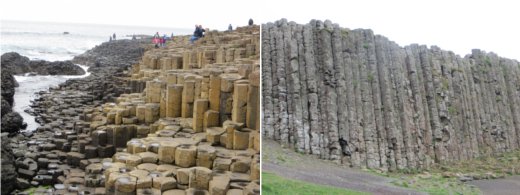
Carrick-a-Rede Island: we passed a short, 20m-long rope bridge to get to the island with amazing views of the cliff side beaches and even though it was raining we were still able to enjoy the scenery. The island is the site of a salmon fishery and the location of the bridge was where fisherman would get their catch.
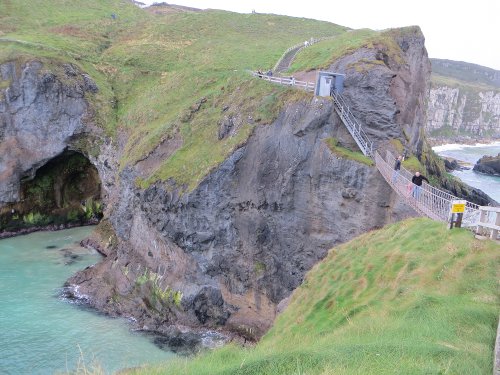
Derry
People’s Gallery: a series of murals that decorate the gable ends of houses that were painted between 1997 and 2001 by the Bogside Artists. They commemorate key events in the Troubles, including the Battle of the Bogside, Bloody Sunday, and the 1981 hunger strike.
City Walls: built between 1613 and 1618, they were the last to be constructed in Europe, and are Ireland’s only city walls to survive almost intact. We were able to walk along the wall and get great views of the surroundings including the People’s Gallery.
Dublin
Temple Bar: the city’s ‘party district’, where we spent a night doing a pub crawl, or bar hopping!! Trying Guinness after Guinness until we could not take anymore!!
City Hall: built between 1769 and 1779 to the designs of architect Thomas Cooley.
Dublin Castle: until 1922 it was the seat of British rule in Ireland, and is now a major Irish government complex.
Christ Church Cathedral: it was a simple wood structure until 1169, when the present church was built.
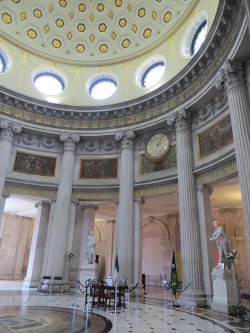


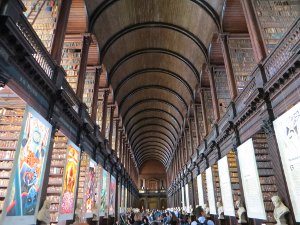
Trinity College: Ireland’s premier university was founded by Elizabeth I in 1592. Until 1793 the students were all Protestants, but today most of them are Catholic. Women were admitted in 1903. We toured the campus with the highlight being able to enter the Old Library to see the Book of Kells, an elaborately illuminated gospel created by monks on the Scottish isle of Iona around AD 800, and the more spectacular Long Room, an early-18th-century library lined with marble busts of writers and philosophers.
St Stephen’s Green: a city center public park designed by William Sheppard, which officially opened to the public in July 1880.
Merrion Square: a Georgian garden square lined with Georgian redbrick townhouses.
Kilmainham Gaol: the jail played a key role in Ireland’s struggle for independence and was the site of mass executions following the 1916 Easter Rising. We had a great tour of the complex with informative facts about the history of the jail and the country.
Guinness Brewery: the building where the tour takes place is shaped like a pint of Ireland’s favorite drink with a bar in the ‘head.’ The tour goes through the whole process of making, smelling, and tasting the beer.
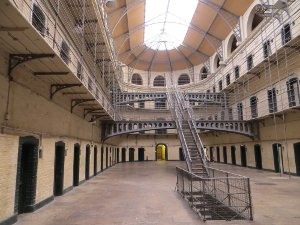
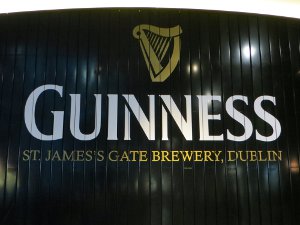
Monument of Light: also known as ‘The Spire,’ it dominates O’Connell Street, which rises from the spot once occupied by a statue of Admiral Nelson. Nelson was a British hero, so the statue disappeared in explosive fashion, thanks to the IRA, in 1966. The Monument of Light soars 120m into the sky and it is said to be the world’s tallest sculpture.

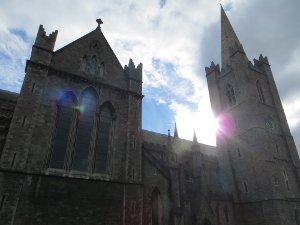
St. Patrick’s Cathedral: there was a church on this site as early as the 5th century, but the present building dates from 1191.
Galway
Cliffs of Moher: the towering 200m-high cliffs drop straight into the ocean and are one of Ireland’s most famous features. We hiked along the top of them offering superb views.

Lynch’s Castle: now a bank, the castle dates back to the 14th century. Lynch, so the story goes, was a mayor of Galway in the 15th century who, when his son was condemned for murder, personally acted as hangman.
Lynch Memorial Window: this stone facade is where Lynch hung his son.
Spanish Arch: the arch was originally an extension of the city wall and a tribute to Spain for the help offered to Ireland during their fight for independence.
Galway City Museum: the museum contained exhibits on the city’s history from 1800 to 1950, including a Galway Hooker fishing boat, pictures of the city in the early 1900’s, and some artistic paintings of the city.
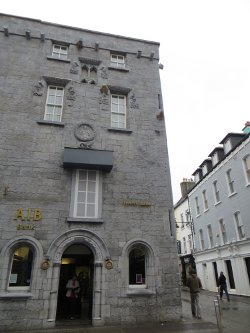


Killarney
Ross Castle: a 15th-century tower house beautifully located on the edge of Lough Leane, in Killarney National Park, it is the ancestral home of the O’Donoghue clan.
Killarney National Park: set beside the city, the mountains in the national park act as a backdrop. We crossed the glistening park lakes of Lough Leane, Muckross Lake, and Upper Lake by a small boat to start biking over the Gap of Dunloe. The park was the first national park established in Ireland.
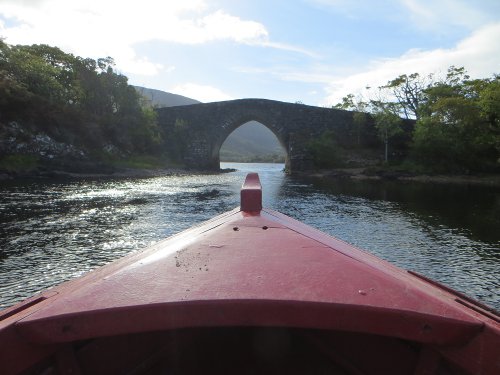
Gap of Dunloe: a scenic, narrow mountain pass squeezed between Purple Mountain and Carrauntouhill. We had a beautiful day when we biked over the gap passing bridges, lakes, and a river.
Muckross Abbey: one of the major religious sites found in the Killarney National Park, it was founded in 1448 as a Franciscan friary. Today, the abbey is largely roofless and the most striking feature is a central courtyard, which contains a large tree.

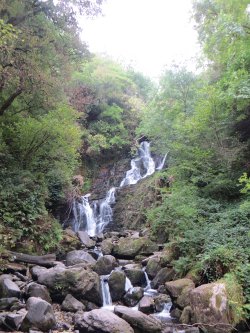
Torc Waterfall: the falls is located at the base of Torc Mountain in the Killarney National Park.
Cork
English Market: featuring ornate vaulted ceilings and columns, the markets hosts many vendors that sell some of the meat, fish, cheese and to-go food from the region.

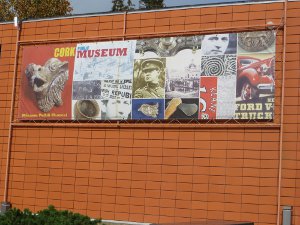
Cork Public Museum: the museum had a collection of artefacts that trace Cork’s past from prehistory to the present, including the city’s role in the fight for independence. The museum also featured a temporary exhibition on the Irish Traveller’s, a nomadic ethnic group.
Crawford Art Gallery: the 18th-century Cork Customs House is blended with 21st-century Dutch design and now hosts this gallery. We took a quick peek inside the artwork, but the building itself seemed more interesting to us.
Inchigeelagh
We spent three weeks WWOOFing in a flower farm in this village. It was the longest time we had been in one place during our world trip. We were hosted by an immigrant German couple with four children. We spent time weeding, harvesting vegetables and fruit, cooking, and other miscellaneous activities. We would spend our free time watching shows or movies with them and on weekends they would take us hiking or visiting beautiful Irish scenery. And even though we were not allowed to help or touch the flowers we did learn a great deal from them. Be sure to read our article to learn more about our experience.
